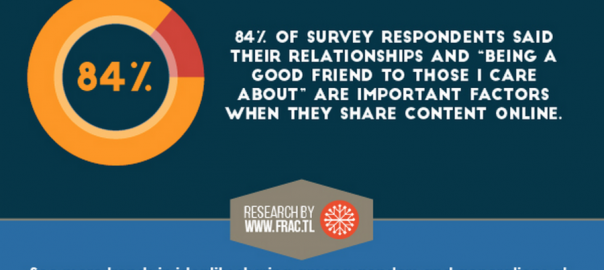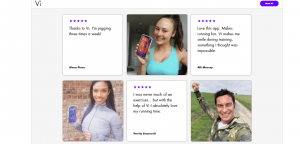Your grandmother and your teenage nephew have one important thing in common when it comes to social media: They both want share content that portrays them as a good friend.
Identity—those parts of ourselves that determine how we act in the workplace, with our friends, with our families, and online—plays a large part in users’ decisions on what they share on social media. But there are many aspects to our identities, and some are more influential in our content sharing than others. According to social science theory, there are five broad identity categories:
- Personal
- Relational
- Social
- Collective
- Superficial
Creating messages that pander to the most salient, or strongest, aspects of users’ identities will help you create content they want to share. To learn which aspects users value most, we asked 1,000 adults of all ages about identity factors they consider when they share online.
Relationships Are Key
Across the board, all age groups agreed that their relational and personal identities are the most important factors when they share content online. The latter category revolves around our goals and dreams, while the former reflects friendships and relationships.
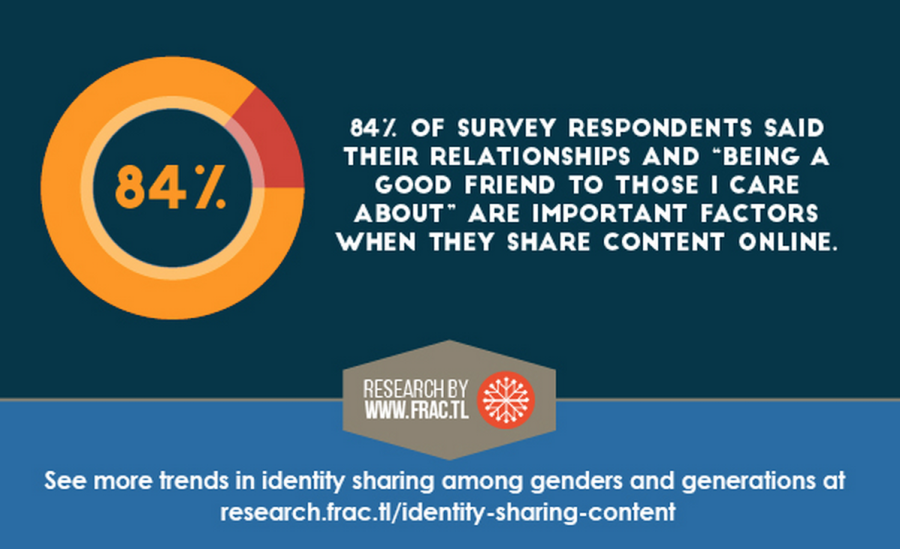
More than 84% of respondents said their friends and partnerships are important when they share content; more than 20% said these factors are “extremely important.” This may explain why positive feelings are among the most viral emotions; users are eager to make their friends and family smile with their social media posts.
Millennials
Two factors of personal identity, goals, and dreams, stood out as being more important to millennials (ages 18 – 34) than to older age groups. Physical appearance, an aspect of social identity, and possessions, an aspect of superficial identity, also ranked higher with younger groups – though not as high as personal identity factors. Marketing campaigns geared toward millennials may want to consider angles on personal achievement or aspirations for increasing content sharing.
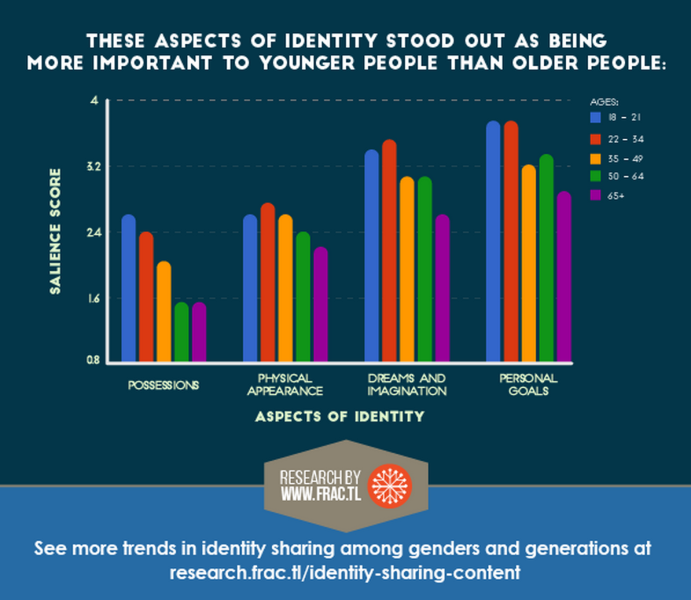
Generation X
Interestingly, no factor of identity stood out as singularly more important to Generation X than to other groups. The only aspect that approached an outstanding score was “being a committed relationship partner,” which respondents ranked the same as older millennials and slightly higher than younger and older groups – but not so much higher as to be considered a trait uniquely important to this generation.
This may make 34 – 50 year olds the most accessible in terms of the breadth of their identity salience; they followed the general trend of valuing, in order, relational, personal, social, superficial, and collective traits.
Baby Boomers
Collective identity – which includes factors relating to belonging to a group – was the least-considered aspect among every age group, including baby boomers. Two collective traits did measure as being more important to the 50 – 64 age group than other groups: Baby boomers ranked “being a part of my generation” and religion higher than Gen X’ers and those age 65+, and significantly higher than millennials.
It should be noted that neither of these factors measured close to the importance of relational identity factors, but boomer-targeted campaigns that incorporate nostalgia for those who grew up in the 40s or 50s, milestones from the 20th century, or current issues important to this group may reach further on social networks.
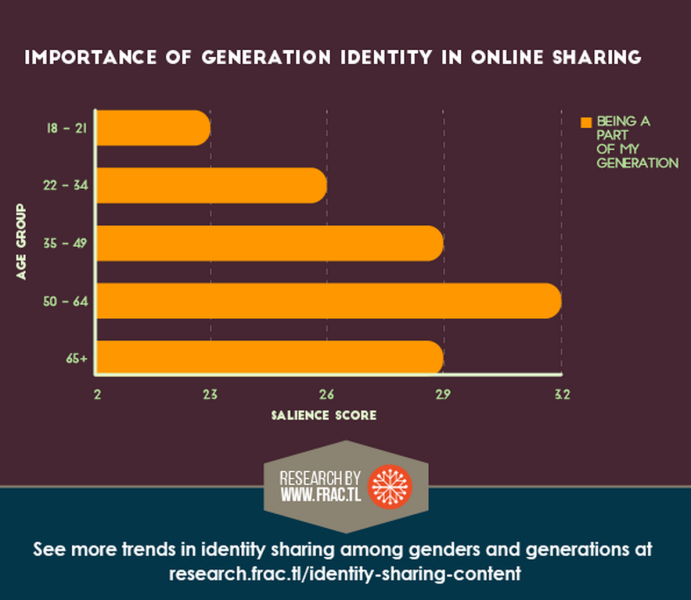
Ages 65+
The oldest generation told us that their top priority when sharing content online is their relationships with the people they feel close to. While relational identity emerged as the most salient identity category to every generation, those ages 65+ ranked this factor even higher than others. Campaigns that draw on the richness of friendships and partnerships can earn more social traction from this group.
See how trends in identity salience break down by gender, and what respondents said most motivated them to share, in our free white paper on Identity and Content Sharing.
Digital & Social Articles on Business 2 Community
(368)
